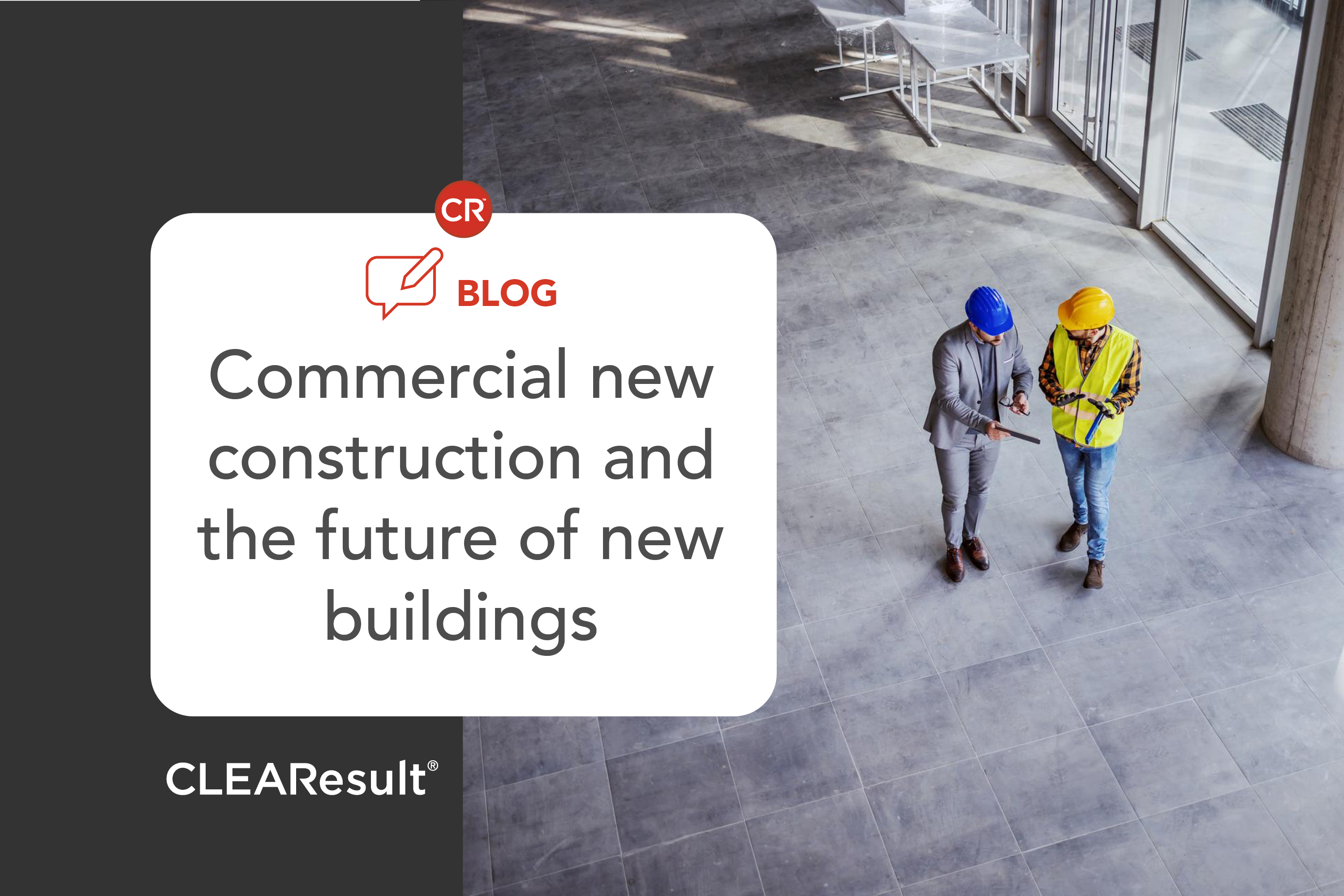Commercial new construction and the future of new buildings

Commercial new construction projects have a unique opportunity to implement energy-efficient design and construction strategies that significantly improve energy performance, reduce carbon footprints and improve long-term operational efficiency. Yet, these projects face many challenges, including rising labor and material costs, supply chain delays, complex building codes and permitting – factors that can often overshadow energy-related considerations.
Building codes and tax incentives in many jurisdictions can help push projects in the right direction, but stakeholders (including architects, contractors, financiers and eventually tenants) need additional support to bring energy efficiency to the forefront of these conversations. This creates a tremendous opportunity for utility programs to engage with stakeholders, provide valuable energy-efficient resources, and shape the future of new buildings by advancing high-performance, sustainable development.
Why are new construction programs important?
New construction programs, led by utilities or other energy program providers, help ensure that stakeholders not only consider sustainability, energy usage and grid connectivity when developing a new project, but also provide education and incentives to drive energy-conscious decisions.
- Energy savings: Perhaps most importantly, new buildings provide a huge energy savings opportunity for utility programs and their customers. Some large commercial buildings can use as much energy as an entire neighborhood of single-family homes, and large-scale data centers may use as much electricity as an entire city. Finding ways to reduce energy usage helps utilities reduce the load on the grid and can help lower operating costs for the building owner or future tenants. When utilities fail to engage with these projects during the design phase, they risk missing out on significant cost-effective energy savings – opportunities that could enhance program flexibility and support a more diverse portfolio of energy solutions.
- Shaping building trends and workforce development: A crucial aspect of these programs is educating stakeholders at every stage of the project. New construction programs can empower architects to assess the energy impact of design choices and equipment selection while considering the costs and benefits of onsite generation and storage. They also support contractors in implementing energy-efficient designs during construction and sourcing high-efficiency equipment. This training and collaboration helps transform the market for these services, ensuring more building design professionals proactively integrate energy efficiency into future projects.
Decades of energy-efficient design: The usable life of a new building should stretch into many decades, so it’s critical to consider energy impact during design and construction to minimize or avoid future retrofitting. Prioritizing energy efficiency from the start helps utilities stay ahead of demand while adding valuable assets to existing and future grid-connected programs, such as demand response, for years to come.
How do new construction programs provide incentives for energy-efficient design?
There are several ways commercial new construction programs can help shift projects toward more energy-efficient designs, including:
- Financial incentives: Like many energy efficiency programs, one of the easiest ways to help customers make a more efficient choice is to provide rebates or incentives. In new construction programs this can take many forms, including prescriptive incentives for new energy-efficient equipment installed in the building or performance-based incentives based on how much more efficient the building is over code.
- Design assistance resources: It’s imperative that architects and builders understand the impact of their decisions on energy usage as early as possible in the design phase. Incentivizing key stakeholders to attend design charrettes helps put efficiency on the table as an important value-add for all involved. Additionally, utility programs can streamline the process by providing valuable technical resources, like energy modeling through strategic partnerships, to simplify energy-efficient building design.
- Training and education: Many architects, contractors and other building stakeholders could have an appetite for energy-efficient design, they just don’t know enough about it yet. By providing training, expert connections and valuable resources, these programs can help them expand their expertise in energy-efficient design, equipment and materials. This knowledge makes their services even more marketable to clients. Training and education are especially important in under-resourced communities, where exposure to green or sustainable building practices may be limited.
We are proud to collaborate with a network of forward-thinking partners on award-winning new construction programs that set the standard for excellence. But we need to continue to expand the impact of these programs beyond just urban centers to all communities across the U.S. and Canada. By working in tandem with other utility program offerings, we can help customers save energy and money, reduce the need for new transmission and infrastructure, and build a more sustainable, resilient energy future.